Rider Waite Tarot early editions
Rider Waite Tarot early editions
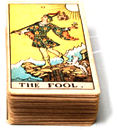
The Rider Waite Tarot early editions
After the first edition of the Rider-Waite tarot in 1909, four further editions were published until approx 1940. These versions differ in several details: outline artwork, colours, lettering, card thickness, the box and the accompanying book. The letters A,B,C and D were given at random and do not refer to the order of publication of the packs. Below are scans from each of these 4 different versions with some notes to aid identification (the scans faithfully preserve the colours of the cards themselves). See our Comparison Chart.
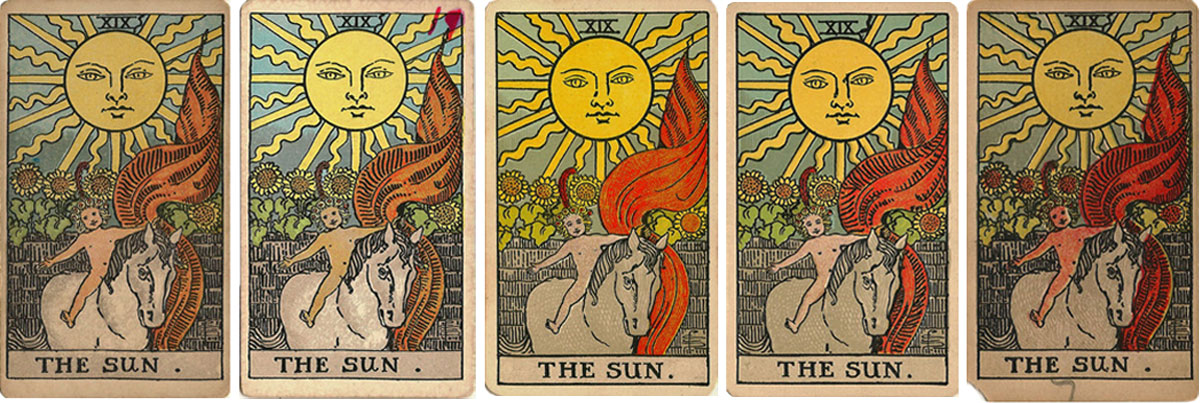
Above: the 'Sun' card from the first five editions of the Rider-Waite tarot serves as an aid to identifying the respective editions. Small tell-tale differences in the line drawings and colours, the lettering and the card thickness, allow these early editions to be classified. For example, in 'The Sun' card, an extra undulating line appears to the right of the Roman numeral at the top, but is missing in Pam-B. Differences in the facial expressions and eyes on the sun face are also discernible, as well as the shading lines in the banner, the printed calligraphy titles, the sunflowers, etc. more →
Version “Pam-A”
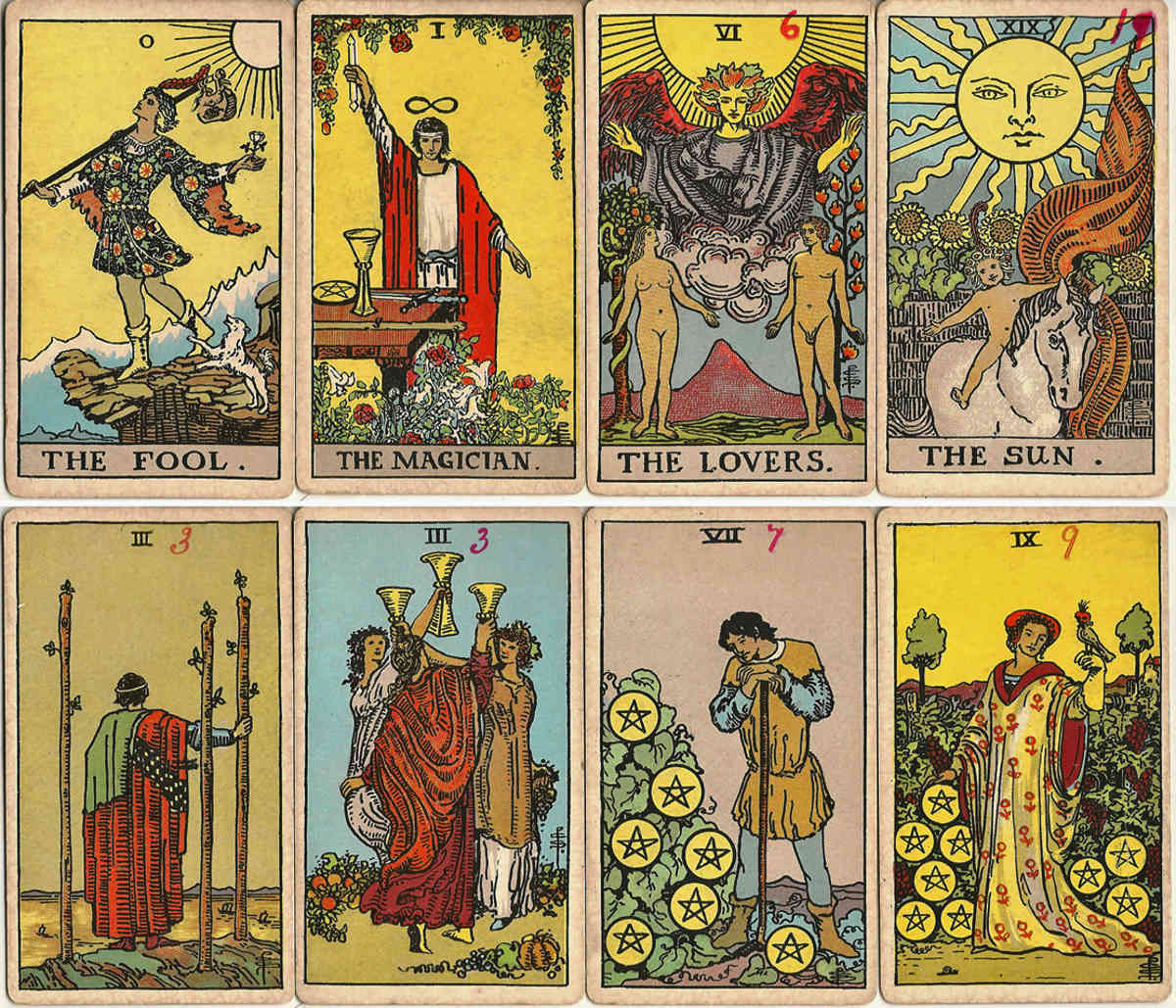
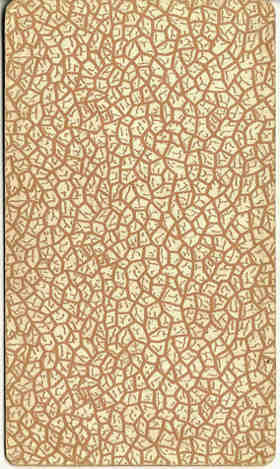
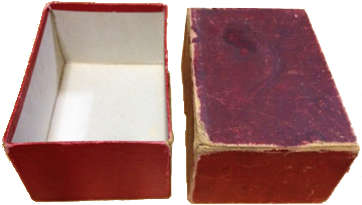
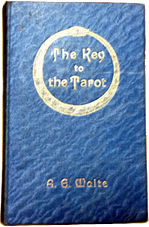
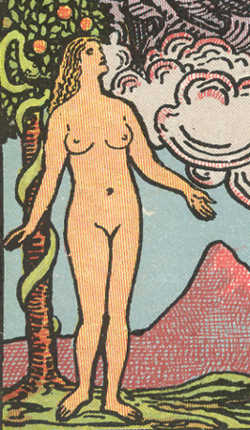
Right: ‘brown crackled’ back design from the “Pam-A” edition, 1910-20 →
“Pam-A” is the second edition and was issued from April 1910 till about 1920 by William Rider & Son. The back of the cards have a brown crackled design. “Pam-A” has long been considered the oldest of the packs. There are two versions known: the difference between lies in the thickness and weight of the cards. The line art and colouring is the same, save for a few very small details one or two cards (in red). William Rider & Son probably switched to a slightly less thick cardstock in later years. It is also possible they started using a new red plate at this time. The early version has a thickness of approx 38-40mm and a weight of 268 gms. The later version has a thickness of 35mm and weighs 252 gms. “Pam-A” was sold in a maroon two-piece cardboard box, accompanied by the book “Key to the Tarot” by Arthur E. Waite. The date of the book is 1910, publisher William Rider & Son Ltd., London. There is no printer mentioned in the book. The cover of the book is blue. The title is a Ouroboros in gold embossed on the front and also in gold embossed on the spine. Alternatively it was also sold in a dark blue slipcase cardboard box and a Prussian blue cardboard slipcase box, both without the book. There is one pack known of the second version on the thinner cardstock that was sold in 1920 with a different looking book. This book was also blue, but no Ouroboros or gold. The title is embossed on the cover and spine. This book mentions the date of 1920 and the printer to be Butler & Tanner, Frome and London.
Left: detail from 'The Lovers' card. The mechanical method used for tinting the skin colour and the hand-made cross hatching on the mountain make this card helpful to classify the different editions more →
Version “Pam-B”
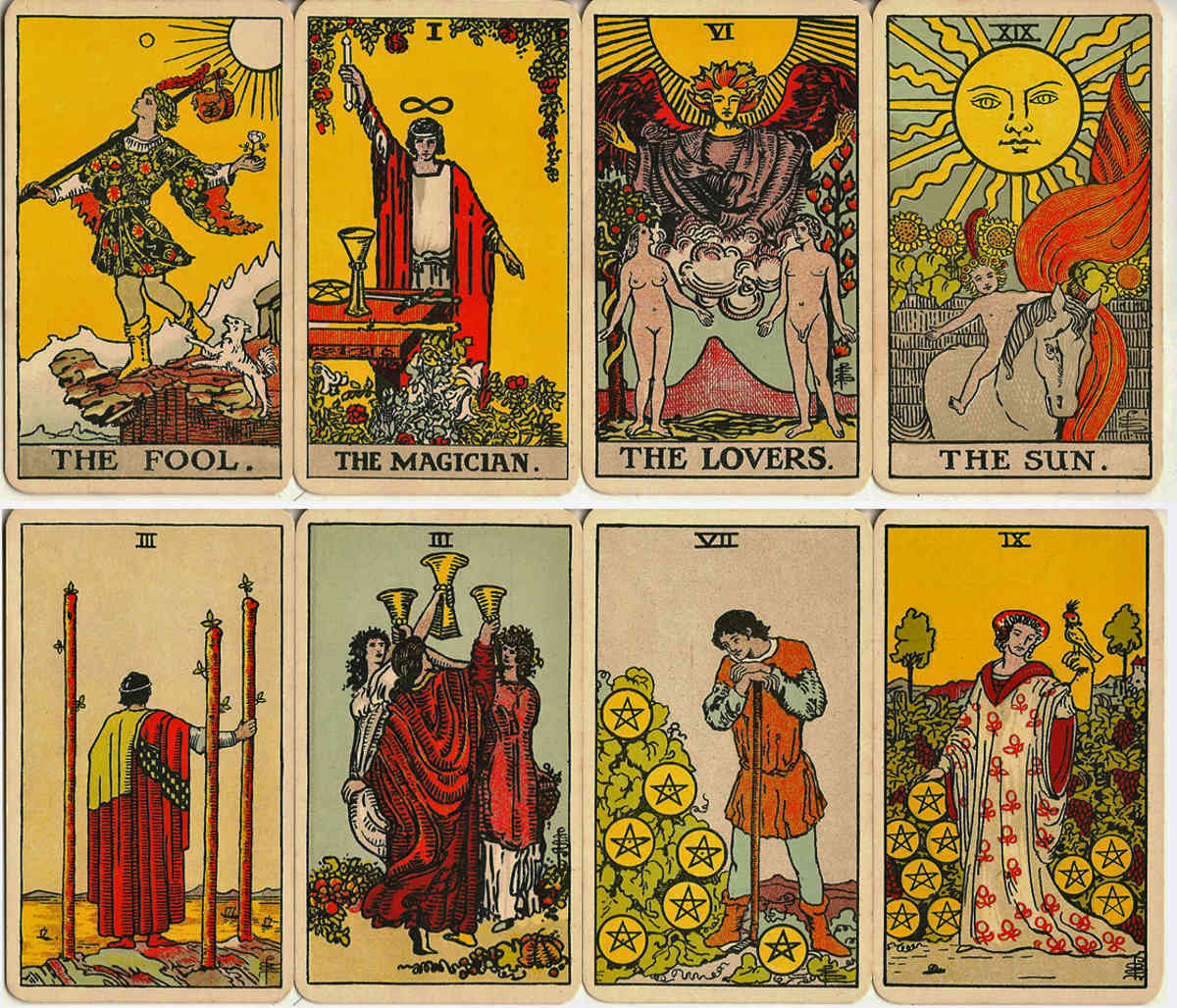
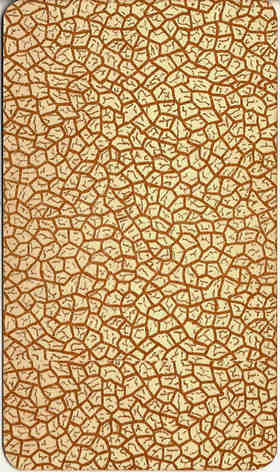
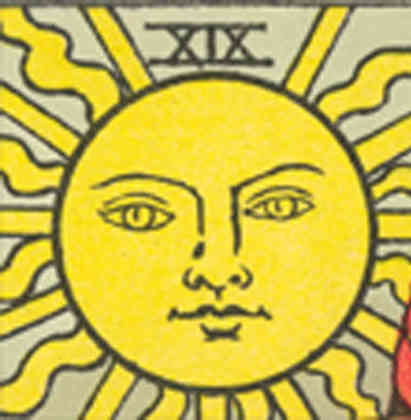
Above: “Pam-B” is the youngest of the early packs and was published from 1931 till about 1940. The oldest packs are from 1931, published by William Rider & Son. Later packs are not dated and were published by Rider & Co., after the publishing house changed name. The back of the cards is a brown crackled design. The line art of “Pam-B” is distinctly different from “Pam-A” and of that published in the “Pictorial Key to the Tarot”. It has clearly been redone for this edition. The line art of “Pam-B” is similar to that of “Pam-C”, with the exception of The Sun card. “Pam-B” was sold in a maroon two-piece cardboard box (which was significantly smaller than that of “Pam-A”) with the book “The Key to the Tarot” by Arthur E. Waite. The book was blue-grey, with the title in black on the spine. The printer mentioned in the book is Fisher, Knight & Co. Ltd, Gainsborough Press, St. Albans. “Pam-B” was also sold without the book in a dark blue cardboard slipcase box. “Pam-B” packs sometimes come with one or two extra blank cards. Thickness of the pack is 26mm and the weight is 212 grams.
Right: ‘brown crackled’ back design from the “Pam-B” edition, 1931-40 →
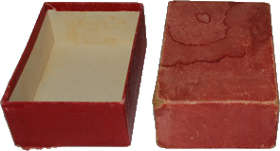
Left: detail from 'The Sun' card. The extra wavy line to the right-hand side of the Roman numeral XIX is missing in this edition. Differences in the facial expressions and eyes are also discernible more →
Version “Pam-C”
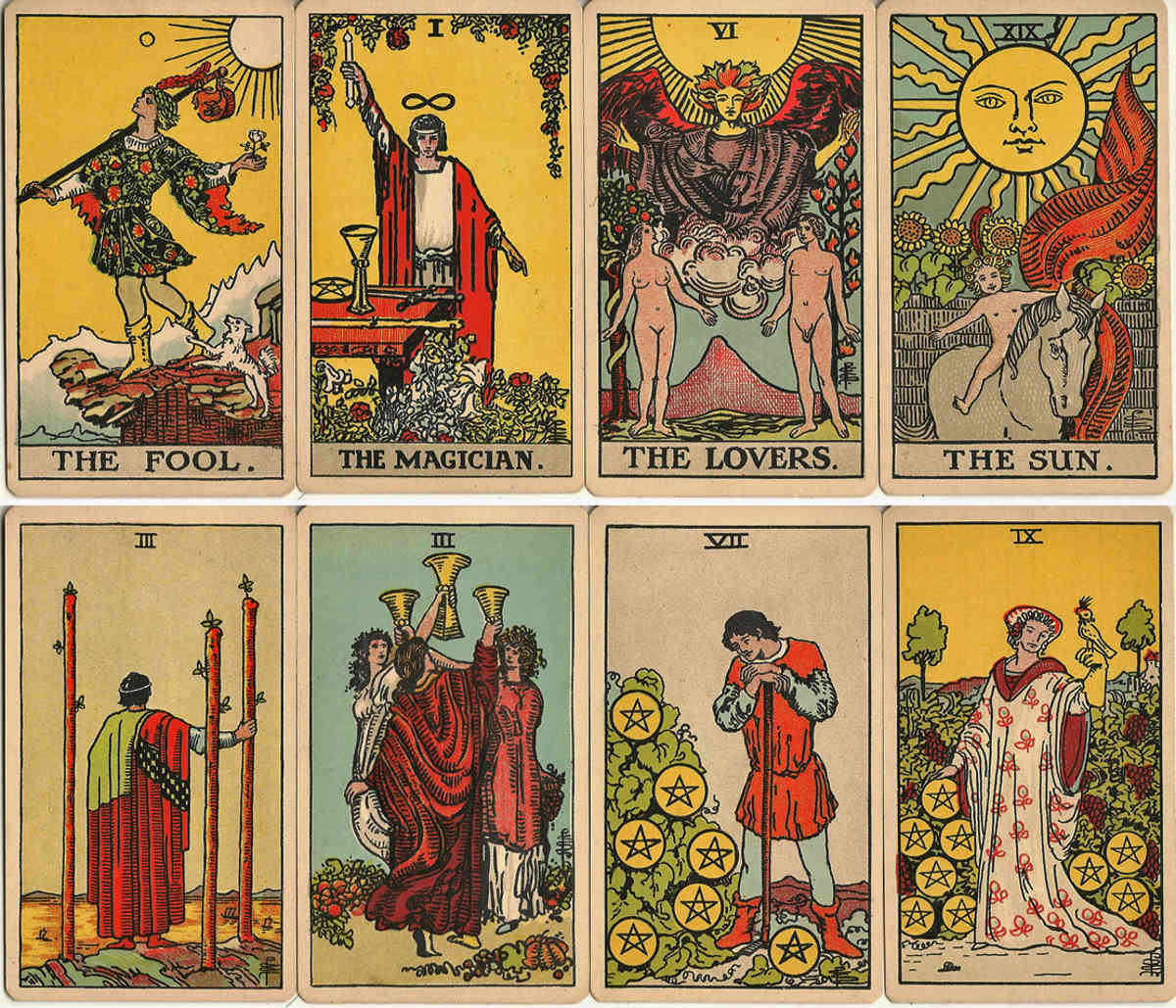
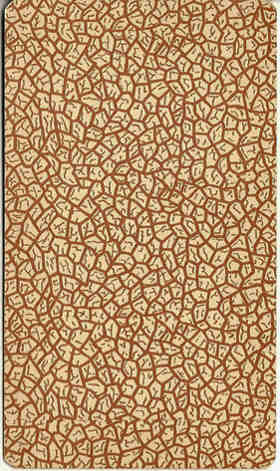
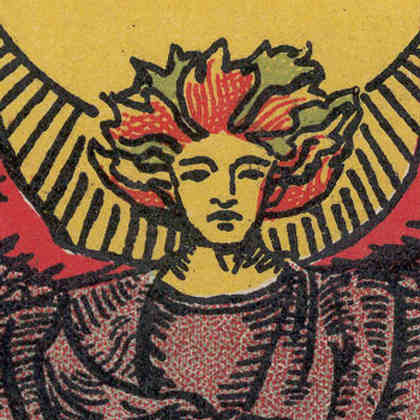
Above: “Pam-C” was published from approx 1920 till 1928 by William Rider & Son. The back of the cards ia a brown crackled design. The line art of “Pam-C” is distinctly different from “Pam-A” and of that published in the “Pictorial Key to the Tarot”. It has clearly been redone for this edition. The line art of “Pam-B” is similar to that of the “Pam-C”, with the exception of The Sun card. “Pam-C” was sold in a maroon two-piece cardboard box (which is significantly smaller than that of “Pam-A”) with the book “The Key to the Tarot” by Arthur E. Waite. The book sold with “Pam-C” has a green linen cover with the title on the spine. The printer is Chance & Bland Ltd., Gloucester. “Pam-C” was also sold without the book in a dark blue cardboard slipcase box. Most known packs were sold in this slipcase box. The “Pam-C” pack sometimes comes with one extra blank card. Thickness of the pack is 26mm and the weight is 212 grams.
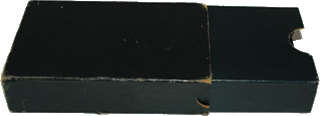
Right: ‘brown crackled’ back design from the “Pam-C” edition, 1920-28 →
Left: detail from 'The Lovers' card. The differences in the angel face features make this card helpful to determine which edition we are looking at more →
Version “Pam-D”
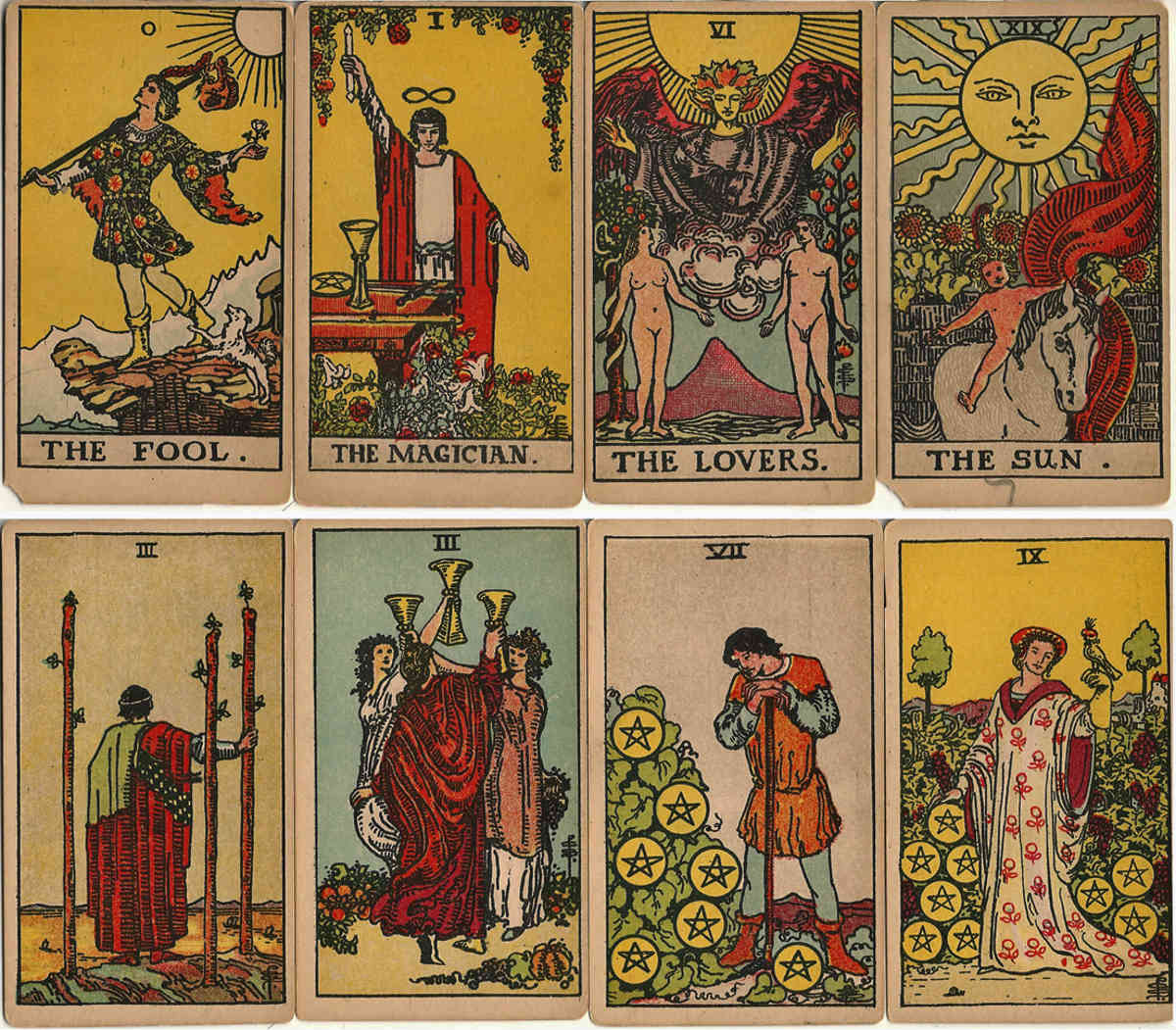
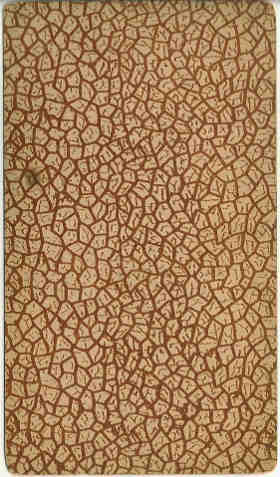
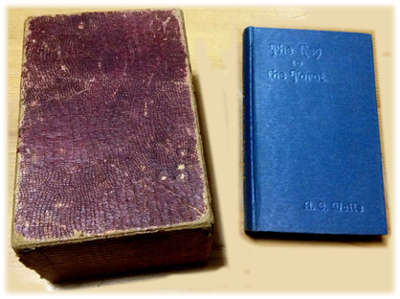
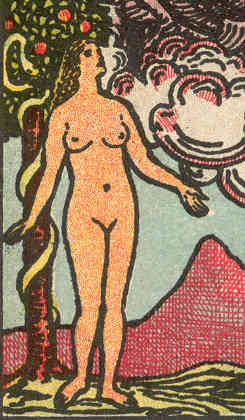
Above: “Pam-D” was issued alongside “Pam-C”, from about 1920 till 1931. It was published by William Rider & Son. The back of the cards have a brown crackled design. The line art is exactly like “Pam-A”. However, the colours on many packs bleed outside the line art due to poor alignment. The colours of the cards often look muddied, possibly due to the combination of lithography and photographic techniques during printing. The “Pam-D” pack is also known to have badly cut corners and the cards are often not homogeneous in size. “Pam-D” has been sold in several different boxes. The very first packs come in a maroon two-piece cardboard box (exactly like that of “Pam-A”), accompanied by the book “Key to the Tarot” by Arthur E. Waite. The date of the book is 1920, publisher William Rider & Son Ltd., London. The cover of the book is blue. The title is embossed on the cover and spine. The printer mentioned in the book is Butler & Tanner, Frome and London. “Pam-D” is also known to have been sold in a maroon cardboard slipcase box and a dark blue cardboard slipcase box. Alternatively, there are packs known to have been sold without a box, with a sticker saying “Made in Great Britain” on one of the cards (6 of Swords). The thickness of the pack is approx. 29-30mm and the weight is 245 grams.
Right: ‘brown crackled’ back design from the “Pam-D” edition, 1920-31 →
Left: detail from 'The Lovers' card more →
In 1971 US Games Systems bought the right to publish the tarot under its current name Rider Waite Tarot from Waite’s daughter, Ms Sybil Waite. The Rider Waite Tarot had a big influence on the tarot world since its creation. In the course of the 20th century many tarots have been based on this pack.
REFERENCES
Jensen, K. Frank: The Early Waite-Smith Tarot Editions, The Playing-Card vol.34 no.1, IPCS, London, July-Sept 2005.
Jensen, K. Frank: The Story of the Waite-Smith Tarot, published by the Association for Tarot Studies.
Images for “Pam-A” and “Pam-D” courtesy Kenji Ishimatsu.
By Saskia Jansen
Member since October 25, 2022 • Contact

Related Articles

Crowley Thoth Review
An intriguing study of Aleister Crowley's Thoth Tarot¹, painted by Lady Frieda Harris during WW2.
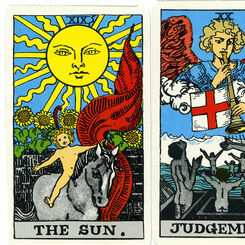
Albano-Waite® Tarot
Recoloured version of the Rider/Waite/Smith tarot produced by Frankie Albano, 1968.
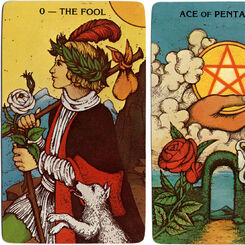
Morgan-Greer Tarot
Based on the knowledge, wisdom and interpretation of Paul Foster Case and Arthur Edward Waite.
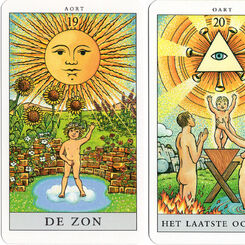
De Tarot in de herstelde orde
“De Tarot in de herstelde orde” (The Tarot in the restored order) a re-ordered Rider-Waite tarot dec...
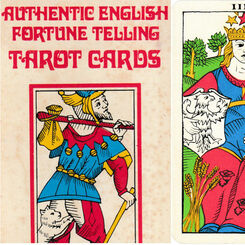
English (or Rigel) Tarot Cards
‘Authentic English fortune telling’ Tarot cards said to be based on a 15th century original found in...
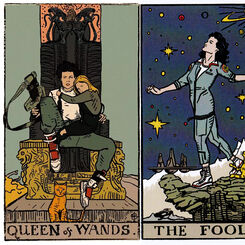
Alien Arcana Tarot
A series of three tarot decks inspired by the Alien film franchise, created by Roy Huteson St...

Hip Hop Tarot
Hip Hop Tarot designed by Ben Gore and produced by Blue Monday Press brings a rap twist to a deck of...
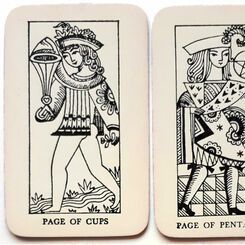
Rolla Nordic Tarot
Rolla Nordic Tarot was drawn by Paul Mathison.
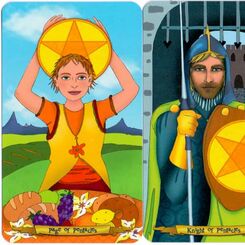
Nine Lives Tarot
Nine Lives Tarot by Annette Abolins represents the artist’s creative and spiritual perspective on li...
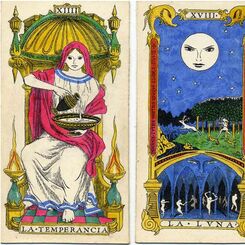
Oliver Mundy tarot
Original Tarot designs in Italian Renaissance style by Oliver Mundy.
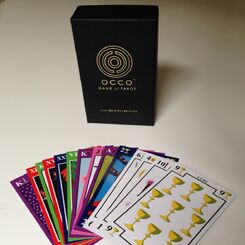
OCCO Game of Tarot
Scott Hill has been working on a tarot pack which can also be used to play card games, the pack has ...
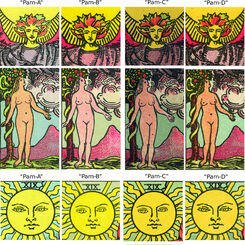
Rider Waite Tarot - details compared
After the first edition of the Rider-Waite tarot in 1909 four further editions were published till a...
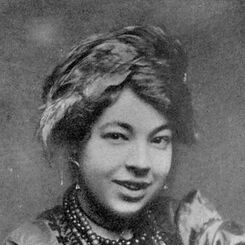
Rider-Waite Tarot
The Rider Waite Tarot was created at the beginning of the 20th century by Arthur Edward Waite and Pa...
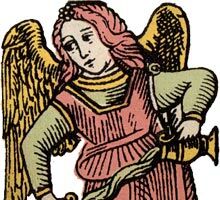
Insight Institute Tarot
During the late 1940s and 1950s The Insight Institute, of New Malden in Surrey, ran correspondence c...
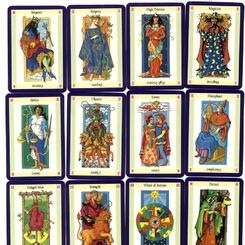
Russell Grant tarot
Russell Grant astro-tarot with optimistic and motivational illustrations by Kay Smith.
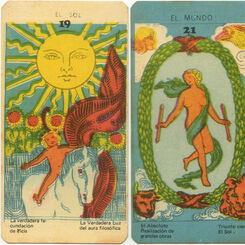
Ramses II tarot
Ramses II Tarot deck was published c.1975 in conjunction with a Peruvian occult or esoteric magazine...
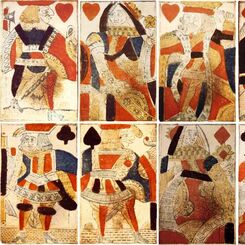
Hunt, c.1800
Standard English pattern playing cards manufactured by Hunt, c.1800.
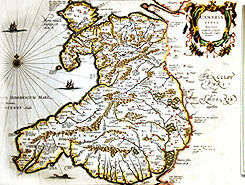
The Llewellyn Tarot - Welsh tarot cards
The Llewellyn Tarot - Welsh tarot cards
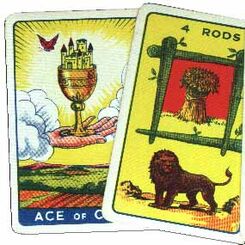
Thomson-Leng Tarot
The Thomson-Leng Tarot Cards were issued by the publishers of women's magazines during the 1930s. Th...
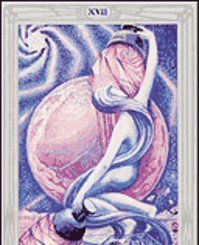
English Tarot Cards
The game of tarot was not widely accepted in England until the 1870s when a number of English occult...
Most Popular
Our top articles from the past 60 days






















